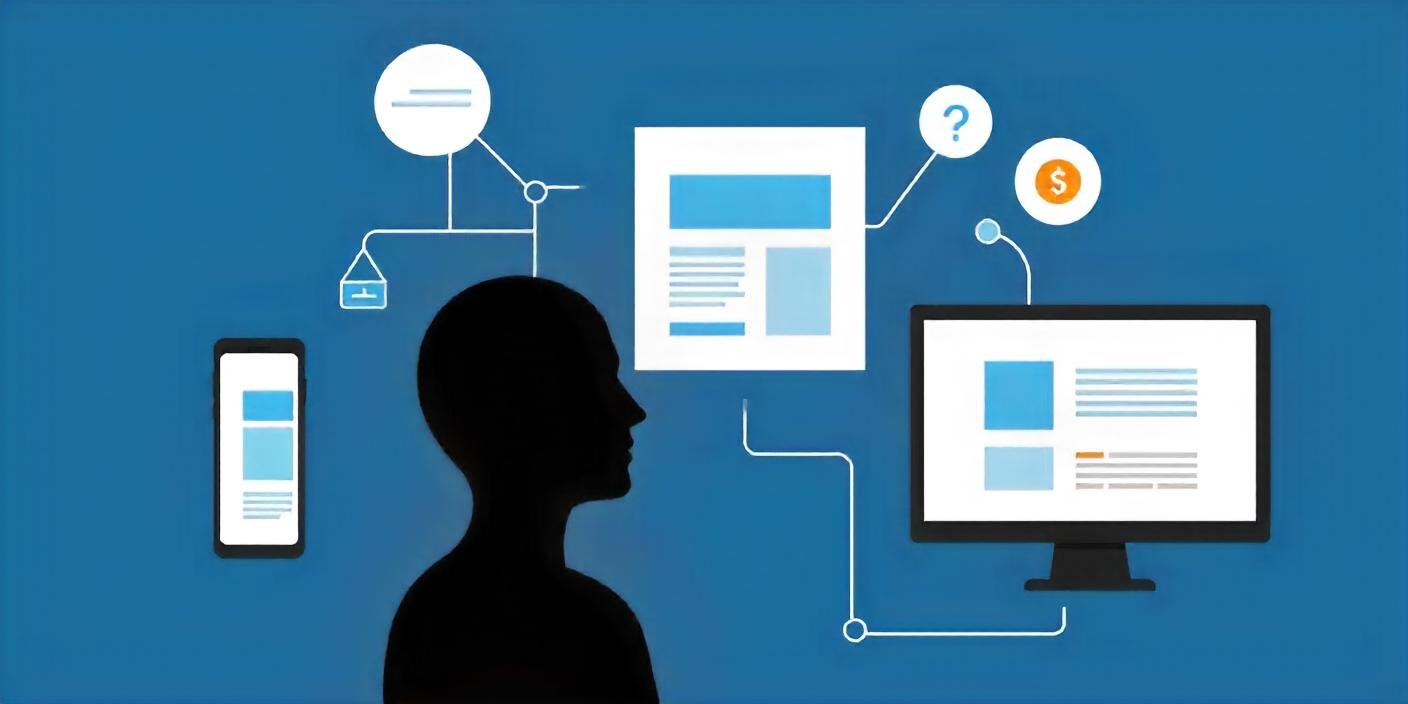Psychology of Web Design
Introduction
In the dynamic landscape of digital interaction, web design has evolved beyond aesthetic considerations to encompass a sophisticated blend of psychological insights and technological advancements. Effective web design today entails not only creating visually appealing interfaces but also optimizing user interaction through an understanding of cognitive processes, emotional triggers, and behavioral patterns. This study seeks to explore the fundamental role of psychology in shaping user experience (UX) on websites, emphasizing its relevance in achieving business objectives and fostering user satisfaction.
Problem Statement
The core challenge addressed by this research lies in unraveling the intricate interplay between psychological factors and web design outcomes. While there is a wealth of research on usability and UX design principles, there remains a gap in comprehensively integrating psychological theories into practical web design strategies. This study aims to bridge this gap by investigating how psychological insights can inform design decisions to enhance usability, engagement, and overall user satisfaction.
Objective
The primary objective of this research is to investigate and analyze the psychological principles that underpin effective web design practices. By conducting empirical research and case studies, the study aims to provide a deeper understanding of how elements such as color psychology, typography, visual hierarchy, and interactive features influence user perception and behavior. Ultimately, the goal is to offer practical guidelines for web designers and digital strategists to create compelling and user-centered web experiences.
Significance
The significance of this research lies in its potential to advance current understanding of web design by integrating psychological principles into design processes. By elucidating the psychological drivers of user engagement and satisfaction, this study not only enhances theoretical knowledge but also provides actionable insights for practitioners in optimizing website performance and achieving business goals. Understanding the psychological mechanisms at play in web design is crucial for creating intuitive, accessible, and impactful digital experiences that resonate with diverse user preferences and expectations.
Literature Review
The literature review synthesizes existing research on the psychology of web design, focusing on key psychological theories and frameworks relevant to UX and digital interaction. It explores seminal works in cognitive psychology, emotional design, and usability studies, highlighting their applicability in web design contexts. Key themes include the role of aesthetics in user perception, the influence of information architecture on cognitive load, and the impact of interactive elements on user engagement. The review identifies gaps in current research, such as the integration of emerging psychological theories and cross-cultural considerations in web design practices.
Methodology
To address gaps identified in the literature, this research employs a mixed-methods approach. Qualitative methods include conducting in-depth interviews with experienced UX designers and usability testing sessions with diverse user groups to gather rich, qualitative insights into user preferences and perceptions of web interfaces. Quantitative methods involve data analytics to measure user interaction metrics, such as click-through rates, navigation paths, and task completion rates. By triangulating qualitative and quantitative data, the study aims to provide a
comprehensive understanding of how psychological principles manifest in user behavior and inform design outcomes.
Results
Preliminary findings suggest strong correlations between specific design elements and user behavior metrics. For instance, websites that employ a minimalist design aesthetic coupled with intuitive navigation structures tend to elicit higher user engagement and lower bounce rates. Data analysis reveals nuanced patterns in user interaction, indicating preferences for visually coherent layouts, clear information hierarchy, and responsive design features. These findings underscore the importance of aligning design choices with psychological insights to create user experiences that are both functional and emotionally resonant.
Discussion
The discussion interprets the results within the broader context of theoretical frameworks and industry practices, emphasizing practical implications for web designers and digital marketers. It explores how psychological principles, such as gestalt principles of perception, color psychology, and persuasive design techniques, can be effectively applied to optimize user experience and achieve business objectives. Comparisons with previous research highlight evolving trends in web design and the evolving role of psychology in shaping digital interaction strategies. Moreover, the discussion addresses methodological limitations and ethical considerations in conducting user research, underscoring the importance of ethical design practices and user-centered approaches.
Challenges and Considerations
Throughout the research process, several challenges emerged, including methodological limitations in data collection, ethical considerations in user testing, and practical constraints in implementing complex psychological theories into web design frameworks. Addressing these challenges is crucial to ensuring the validity and reliability of research findings and maintaining ethical standards in digital user research. Future research should aim to overcome these challenges by employing advanced research methodologies and interdisciplinary approaches to further enhance our understanding of the psychological underpinnings of effective web design.
Conclusion
In conclusion, this research underscores the critical intersection of psychology and web design in shaping user experience and perception. By integrating psychological insights into design processes, organizations can create websites that not only attract but also engage and retain users effectively. Practical applications include adopting user-centered design methodologies, leveraging emotional design strategies, and conducting iterative testing cycles to refine design decisions based on user feedback and behavioral analytics. Ultimately, understanding the psychology behind effective web design is pivotal for enhancing user satisfaction, fostering brand loyalty, and achieving sustainable business growth in the digital age.
Recommendations for Further Research
Future research opportunities include exploring the impact of emerging technologies (e.g., AI, augmented reality) on user perception and interaction with web interfaces, investigating cross-cultural differences in web design preferences and usability expectations, and examining long-term user behavior patterns to inform predictive design strategies. These avenues would advance our understanding of the psychology behind effective web design and contribute to ongoing innovations in digital user experience.
References
1. Metral, K. (2024, June 30). 5 Psychological Factors behind Great Web Design | Cosmico. Cosmico | Business and Technology Insights. https://www.cosmico.org/5-psychological-factors-behind-great-web-design/
2. Forestpjl. (2024, February 14). The Psychology behind Effective web design. Forest Web Design. https://website-designer-reading.co.uk/web-designer-blog/the-psychology-behind-effective-web-design/
3. Ellis, T. (2023, June 22). The psychology behind successful web design. H2o Digital. https://h2o-digital.com/the-psychology-behind-successful-web-design/

